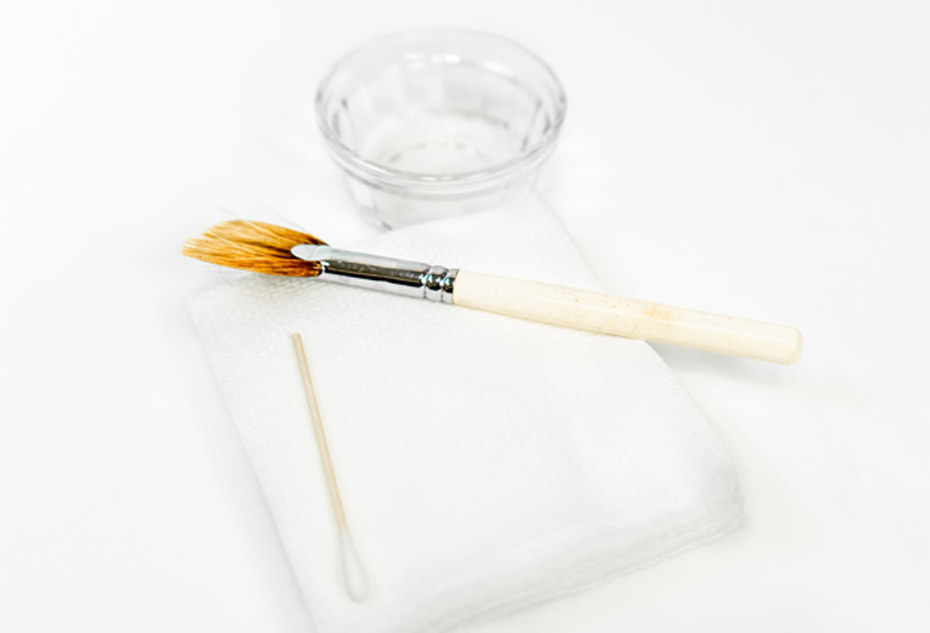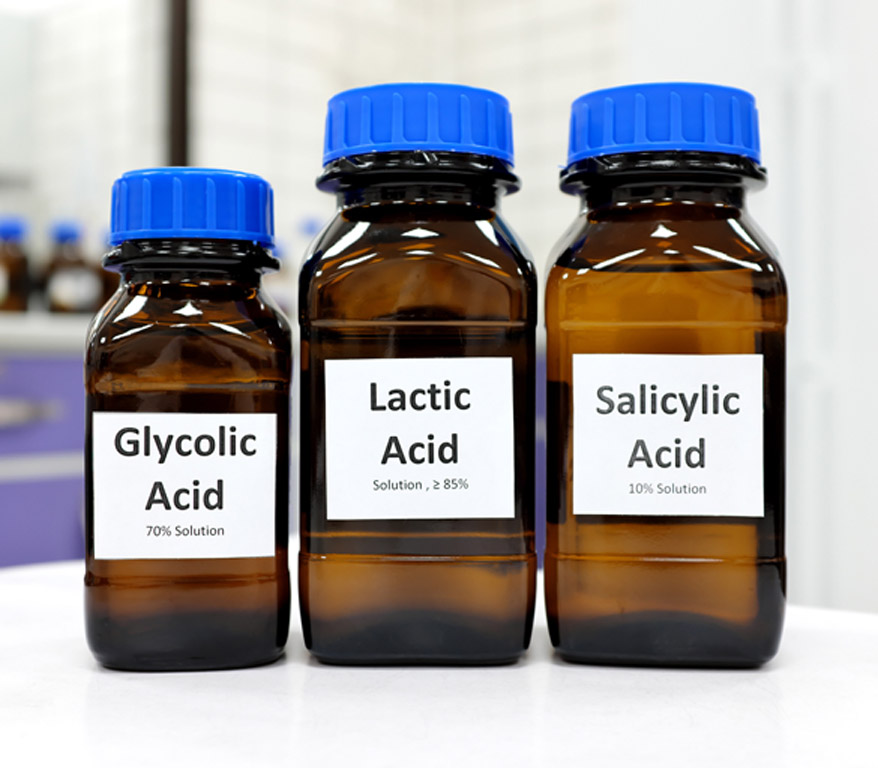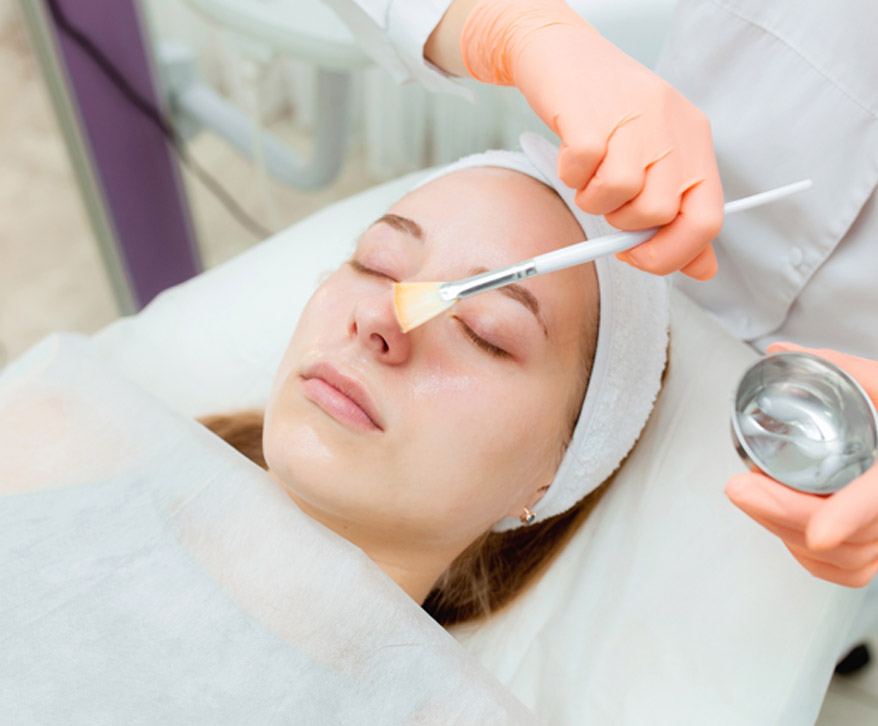Chemical Peel

During a chemical peel, the esthetician applies a chemical solution to the patient’s skin to remove the top layers. The new skin is smoother and appears healthier. Patients who undergo a light or medium peel may need to undergo the procedure multiple times to get the desired results.
Chemical peels can help treat wrinkles, skin discoloration, and scars — usually on the face. They can be performed as a stand alone treatment or combined with other cosmetic procedures. Chemical peels can be done at different depths, from light to deep. Deeper chemical peels offer more visible results but require a longer recovery process.
Goals of a Chemical Peel
Patients may choose to undergo a light, medium or deep chemical peel, depending on their goals and skin condition or concern.
A light chemical peel removes the outer layer of skin and is typically done to treat acne, fine wrinkles, uneven skin tone, and dryness. Patients may undergo a light peel every two to five weeks.
A medium chemical peel removes skin cells from the epidermis and from the upper part of the middle layer of skin, called the dermis. This type of chemical peel can help treat wrinkles, acne scars, and uneven skin tone. Patients may need to repeat the procedure to achieve or maintain their desired result.
A deep chemical peel removes skin cells deep beneath the epidermis. This type of chemical peel is recommended for deeper wrinkles, scars, or precancerous growths. One session is enough to obtain the full effect.
Chemical peels aren’t able to remove deep scars or wrinkles, or tighten sagging skin.


Risks
Potential side effects of a chemical peel include:
- Redness, scabbing, and swelling. It is normal to experience redness, as this signifies the skin is healing. After a medium or deep chemical peel, patients may experience redness for a few months.
- Scarring. In rare instances, a chemical peel can cause scarring — typically on the lower part of the face. Patients can take antibiotics and steroid medications to soften the appearance of these scars.
- Changes in skin color. A chemical peel can lead to hyperpigmentation (which is when the skin is darker than usual) or hypopigmentation (which is when the skin is lighter than usual). Hyperpigmentation is a potential side effect of superficial peels, while hypopigmentation is more common after a deep peel. These side effects are more common in people with skin of color.
What to Expect During Treatment
The doctor will begin by cleansing the patient’s face. Next, he or she will use a brush, cotton ball, gauze, or sponge to apply a chemical solution typically containing glycolic acid or salicylic acid. The treated skin will begin to whiten and patients may feel mild stinging while the chemical solution is on their skin.
The doctor will then apply a neutralizing solution or wash to remove the chemical solution from the patient’s face.
Recovery After the Procedure
After a chemical peel of any depth, patients will have red, tight, irritated, or swollen skin. Patients will be instructed to follow their doctor’s directions for sunscreen use, cleansing, moisturizing, and applying protective creams to their skin. They will be advised to avoid picking, rubbing, or scratching their skin. Patients may need to wait several months before their skin color returns and the full results of the peel become visible.

